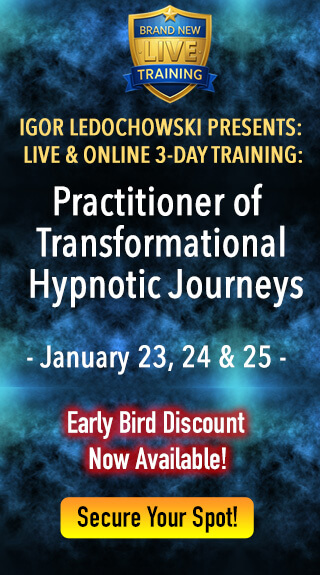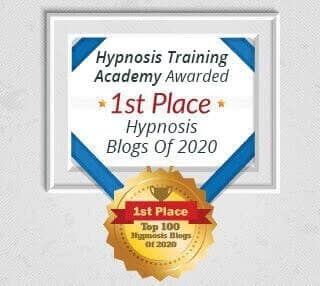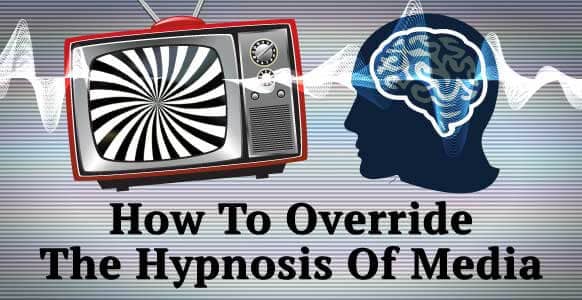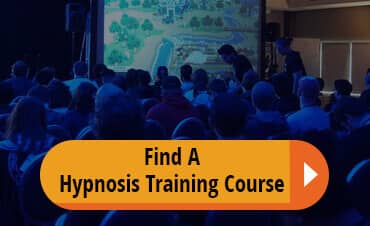
When you get right down to it, stress ain’t so bad.
After all, if you never felt stressed, you might never get anything done.
Stress is natural.
It’s your body’s way of coping with demanding situations.
It floods your system with hormones like cortisol and adrenalin so you can deal with whatever’s thrown at you.
It only becomes a problem when the stress you experience is ongoing. When there’s no let-up. When there’s no opportunity for you to take a break.
And if you’re under that much stress, you should definitely see a hypnotherapist.
Fortunately, though, much of the stress you experience is short-lived. By the time you’ve headed for home after work, it’s often already starting to fade away.
And there are helpful things you can do to take your mind off stressful situations. Things like going for a pleasant walk. Or reading a gripping book. Or having a nice long soak in a deliciously hot bath.
But being human, they won’t always work.
You can’t just switch off, because your conscious mind won’t let you.
It keeps going over and over your day, analyzing and evaluating everything you’ve done.
Buzzing away in the background like an annoying fly. Or an itch you can’t reach. It won’t stop on its own. Not just because you want it to.
And that’s why it makes sense to have another trick up your sleeve. One that’s guaranteed to quiet your mind and help you shut out the world, even just for a little while.
A Daily Dose Of Targeted Stress Relief
So what can you do?
Well, you could set aside 10 minutes and use it to get rid of stress yourself.
And the good news is, it’s not as hard as you think.
For instance, think about what might happen when you visit a hypnotherapist.
They’ll get you comfortable. They’ll start to talk to you. They’ll find out what your goal or problem is. And then they’ll take you through a series of stages to help you tackle it.
A typical example of this is the familiar 4-Stage Hypnotic Protocol.
Here are the stages in brief:
Stage 1: Absorb Attention
Before they can hypnotize you, the hypnotherapist needs to have your attention. If you’re not paying attention to them, nothing they say or do will make the slightest bit of difference.
When you’re practicing self-hypnosis, the same thing applies. In this case, you want to
switch your attention from the outside to the inside. From the outer world to the world inside your head.
One simple way for you to achieve this is by listening to some relaxing music through a pair of headphones.
Stage 2: Bypass the Critical Factor
This stage is designed to bypass the conscious mind and get at the unconscious.
A hypnotherapist will use a variety of techniques to do this – but you only need one. The quickest and easiest method to make it work is to just focus on your breathing.
Because breathing is something you do naturally, you don’t have to concentrate on it. It just happens automatically. So when you do concentrate on it, it allows your conscious mind to take a break. It doesn’t have to analyze what you’re doing, because you do it all the time anyway.
So basically, you’re giving your conscious mind permission to chill out.
Stage 3: Activate an Unconscious Response
To stimulate your unconscious mind, the hypnotherapist will appeal to your emotions.
This can be achieved by getting you to think of a particular time or place that holds significance for you.
A time or place that’s filled with fond memories. Where you were happy, or confident, or in love, for instance. Or when you accomplished something that made you feel proud or important. Any time or place that brings back a strong, positive emotion will do the trick.
And, of course, you can do the same thing yourself. Just think of that time or place and the emotions it brings back. See it, taste it, hear it, touch it, and smell it. Let it wash over you so you almost feel like you’re right back there again.
Stage 4: Lead the Unconscious to the Desired Outcome
A hypnotherapist implants suggestions into your unconscious mind. These suggestions will help you achieve your goal or overcome your problem. They’re designed to motivate you toward your desired outcome, whether that’s breaking a bad habit or realizing an ambition.
For everyday stress-busting hypnosis, things are a bit easier. There is no goal or problem other than the need to unwind. To de-stress. To calm down and restore your body’s sense of equilibrium. You can accomplish this by making the most of the emotional connection.
The feelings it generates. How calm and tranquil you become. Letting the restful experience take over your body and mind.
Naturally, when you practice self-hypnosis, you won’t think in stages. You’ll simply work through the exercise until the whole thing becomes automatic.
It’s a lot less hassle than going to a hypnotherapist. It’ll save you time, and it’ll save you money.
And once you get the hang of it, you can do it every day… at any time you like. Think of it as your own personal “maintenance treatment” to keep stress at bay.
Here, then, is your 10-minute daily hypnosis exercise for fast and effective stress relief.
10-Minute Daily Hypnosis Exercise to Wipe Away Stress
To make sure it works, you should do what the professionals do. Try to include as much of the 4-Stage Hypnotic Protocol as possible.
The steps you need to follow are listed below, followed by a quick summary of the process.
- Find a quiet place to practice where you won’t be disturbed for a solid 10 minutes. Give yourself a few extra minutes to get set up before you begin. Make sure anything that beeps or buzzes is switched off or put into silent mode.
- Sit in a comfortable chair or lie down on your bed. Prop yourself up on some pillows so you aren’t likely to fall asleep… unless you want to. If you get so relaxed that you do drift off, don’t worry. It just means that you were successful at becoming less stressed!
- Play some relaxing music or sounds of nature in the background. If external noise is an issue, listen to the music or sounds through a pair of headphones.When you want total peace and quiet, the smallest thing can put you off. Even the humming of an electrical appliance. That’s why headphones can be so useful.
- Close your eyes so you’re not tempted to look around the room or out the window. A spot on the ceiling, an imperfection in the wallpaper, a shape in the carpet – any of these can steal your attention. You need to shut out the sounds and the sights so you can focus your attention inward.
- Concentrate on your breathing. Breathe slowly in and out, feeling how each breath helps you get more and more relaxed. Every time you breathe in, you’re filling your body with pure oxygen. Every time you exhale you’re releasing the stress and tension.
- Think of a favorite time or place when you felt really great. When you felt comfortable and happy. When life was so good you thought it could never get any better.
- Feel what it felt like to be there at that time, in that place. See yourself smiling, laughing, doing the things that made you feel fulfilled and satisfied. Take note of any other people around you that contributed to the occasion.
- Use all your senses to capture the emotions you felt at that time, in that place. Notice what you saw, what you heard, what you said, what you did, what you touched, what you smelled, and what you tasted.
- See yourself back in that time, in that place, when everything was perfect. Relive the experience in as much detail as possible, so it feels like you’re right back there again.
- When the images and/or feelings start to subside, return your focus to your breathing. Breathe in and out, slowly and steadily, and gradually open your eyes.
And that’s all there is to it! Here’s the complete process in summary form:
- Find a quiet area to practice
- Listen to relaxing music
- Close your eyes and focus on your breathing
- Think of a favorite time or place
- Relive the emotions you felt
- Use all your senses to bring the scene alive
- Focus on your breathing and open your eyes
The first time you use the technique, it might take more than 10 minutes. But the more you practice, the faster you’ll get. Try not to worry about how long it takes you. Once you master it you’ll be able to close your eyes and transport yourself in seconds.
Stress can easily build up and turn your body into a sort of pressure cooker. Unless you find a way to release it, there’s a danger that it might eventually explode.
Don’t wait for that to happen. Try this simple exercise, once a day, and feel the stress melting away faster than you ever thought possible.
And to learn more about how to beat stress through hypnosis, check out our other related articles that we have been featuring as part of Stress Awareness Month.










![[ADVANCED GUIDE] How To Master Hypnotic Regression Therapy - Part I: Essential Principles To Profoundly Transform Your Subject’s Emotional Trauma [ADVANCED GUIDE] How To Master Hypnotic Regression Therapy - Part I: Essential Principles To Profoundly Transform Your Subject’s Emotional Trauma](https://hypnosistrainingacademy.com/wp-content/uploads/2016/09/hypnotic-regression-therapy-essential-principles.jpg)



